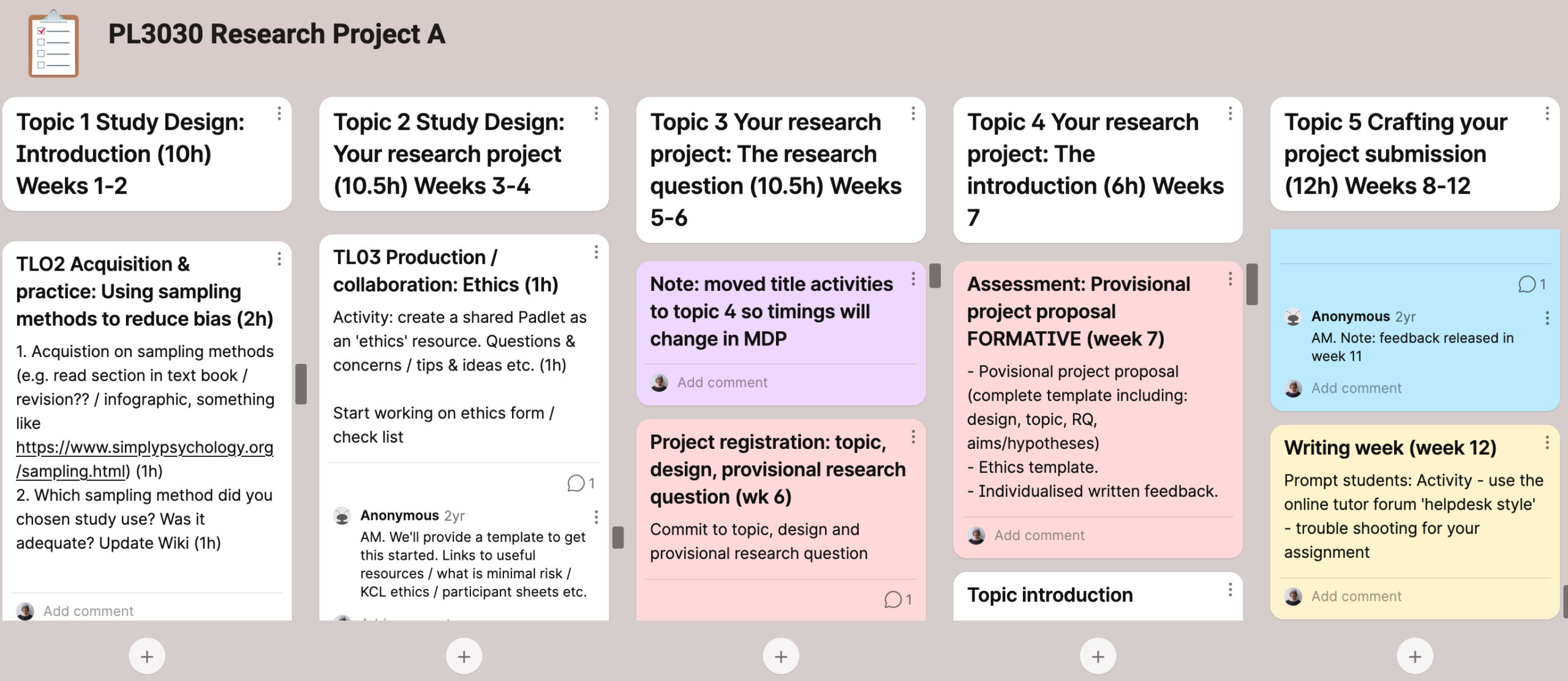
Developing good online learning is a complex and messy business. At the University of London the process begins with an academic subject expert and a learning designer who collaborate to establish the bare bones of the teaching and learning activities. There is sometimes a gap between educational theory and the practice of teaching in the disciplines which makes this stage a vital one.
In this interview, learning designer Larisa Grice discusses some of the approaches she uses to bridge this gap, sharing the tips she has gained during seven years of working in learning design.
What experience does the University of London have in creating online distance learning?
The University of London has been developing and running distance learning degrees for over 100 years and, more recently, started providing online only degrees and short courses. UoL currently has about 40,000 students studying with us, located all over the world. We develop our courses in collaboration with academics from our member institutions, such as UCL and Goldsmiths, University of London, and they are taught on Moodle, or in partnership with Coursera.
Who do you work with to create online learning?
My main relationship is with the academic subject expert, but here at the University of London we have a large team of people who carry out specific tasks:
The learning designer provides guidance and advice to the academic subject experts starting from the planning and design phase up to the moment when the course is lunched.
The librarian sources digital copies of the text books, journal articles and other academic reading material required by the course.
The academic editor edits the teaching material we receive from academics. They focus on things like copyright, adding third-party attributions as required and researching alternatives if needed. They ensure accuracy, consistency and clarity of the learning material, add clear instructions around readings and activities to guide students on their learning journey on the course.
The video editor is responsible for the production of video lectures starting from delivering a video production workshop, filming in the studio, editing the videos and uploading them to the platform.
The motion graphics designer collaborates with academics and learning designers to help bring to life difficult concepts using graphics and animations.
The learning technologist uploads the learning material to the platform ensuring everything is consistent and working.
The production manager creates a production schedule for each course and ensures all work is completed on time.
What is the biggest obstacle you face when working with academics who are new to online learning?
I would not say ‘an obstacle’ but rather a challenge. Working on designing and developing an online course can be a big learning curve if you haven’t done it before. Most of the academics we work with have no (or very little) experience with asynchronous online learning, but some have experience of ’emergency’ online learning measures put in place due to the Covid-19 pandemic – very often synchronous teaching via Zoom calls. This is different from the asynchronous online courses we develop at the University of London.
We guide our academic subject experts on good online learning design through a series of learning design workshops, ‘homework’ activities and one-to-one feedback meetings. We have found that basing our learning design around the six activity types of the Conversational Framework works well as it is easy to remember and practical.
After the first workshop the academics have time to think about how to plan a small chunk of online teaching, using the workshop resources and applying the information to the design of their own subject, and then we meet to discuss and feedback on it. This gives them a good foundation to design the whole module.
What is your advice for instructional designers who are doing this job for the first time at their institutions?
I would recommend allocating as much time as possible for planning a course before embarking on creating content and placing it on the platform. It is very tempting to start authoring content directly on the platform because seems like a straightforward process, thanks to a very good editing interface. The planning can be done on pre-designed templates to ensure all the information is provided and avoid potential complications in production of the course down the line. Another valuable tip is to share examples of learning activities and course designs similar to the ones under development.
What learning design planning tools would you recommend for those who are doing this for the first time?
At the beginning I recommend dedicating a great deal of time to learning the tools and complex functionality of the platform to understand the bigger picture of what was possible to implement from a learning designer’s perspective and how it would impact on a student’s learning journey throughout in a particular course.

For planning and designing the course, there are various tools and templates. For storyboarding a new module, we use Padlet and Miro for the early stages and then move to a more detailed module design plan document to outline the structure and sequencing of the activities along with the resources that are needed. An alternative is the Learning Designer tool that was developed by the UCL Knowledge Lab and is free for anyone to use.
